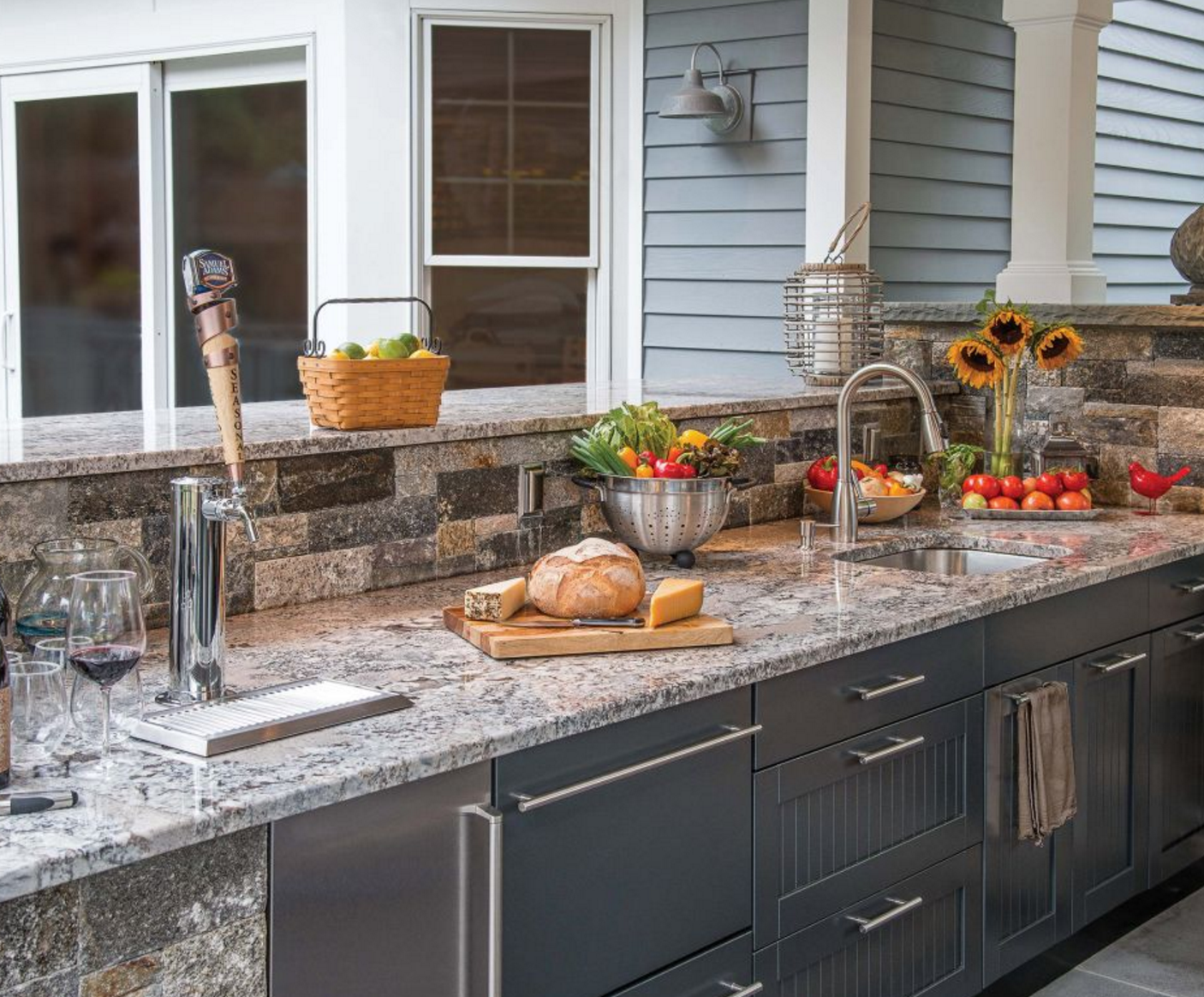Photo: Brown Jordan Outdoor Kitchens
Modular outdoor kitchen cabinets have become popular with the improvement of their designs over the years, but can they really hold up to classic built-in design? In this article, we’ll break it down to help you decide which one is right for you.
Pros and Cons of Built-In Cabinets
If constructed from the base up from brick, stone or cement block, built in cabinets are hardy and fireproof (not taking doors and fittings into account). They also offer a solid permanent feature, but this places major limitations on what you can do with them – and how quickly.
Built-in cabinets are not only limited by the amount of structural support they require, but because of the bulk of the building materials, built-in cabinets also require more room and provide less storage space. The porosity of cement or stone also offers poor protection for foodstuffs as the insides often become damp from humidity.
Depending on the materials used, built-in cabinets can be pricey, particularly if you’re having them built from natural stone. Then - perhaps the biggest drawback for some – there is the inconvenience that stems from having built-in cabinets constructed on-site.
Photo Courtesy of Brown Jordan Outdoor Kitchens
Modular Outdoor Kitchen Cabinets
NOT AS FLAMMABLE AS THEY SEEM.
The main concern regarding the use of modular kitchen cabinets versus built-in cupboards is the fire hazard, especially since they’re often used in such close proximity to heating equipment such as grills and smokers. While many models still feature flammable wooden veneers and non-fire-resistant plastic which make them vulnerable to heat exposure, modern designs sidestep this flaw with the use of insulating veneers, or stainless steel and stucco exteriors.
LIGHT-WEIGHT AND PORTABLE
Recent developments in the design include an aluminium frame, so it won’t rust and streak your patio. The aluminium frame also greatly reduces weight meaning a modular cabinet can be used in conjunction with decking.
Because they aren’t fixed, modular outdoor kitchen cabinets can be moved and rearranged according to changing tastes or to match a new patio layout. This also leaves open the option for the addition of more cabinets and new features. Modular cabinets are also mostly built off site, meaning your schedule will not be disrupted by the presence of work teams at home.
SPOILT FOR CHOICE
Modular cabinets not only come in all shapes and sizes, but there are also variety of materials to choose from for the exterior of your modular cabinets.
Stainless steel is a convenient option, with hygienic surfacing that is easy to clean and durable against the elements. It gives a great modern feel to an outdoor kitchen, which can be used to great effect in contrast to the natural surroundings.
For the traditionalists, a stone veneer creates a look that is indistinguishable from a cabinet constructed from stone from the ground up. It’s less bulky than its built in counterpart, but looks just as great.
If you’re looking for the aesthetic of stone without the weight, or wood without the fire hazard, High Density Poly Ethylene (HDPE) is a great choice. This hardy plastic not only stands up against the test of time and is lightweight, but it can also be easily customized to take on the look of natural elements.
SPACIOUS AND CUSTOMIZABLE
Modular cabinets offer considerably more storage space in comparison to their built in counterparts. In addition, stainless steel or plastic cabinets provide excellent protection from damp or the outdoor elements. The streamlined building materials of modular cabinets also means they can be customized to accommodate most outdoor appliances.




